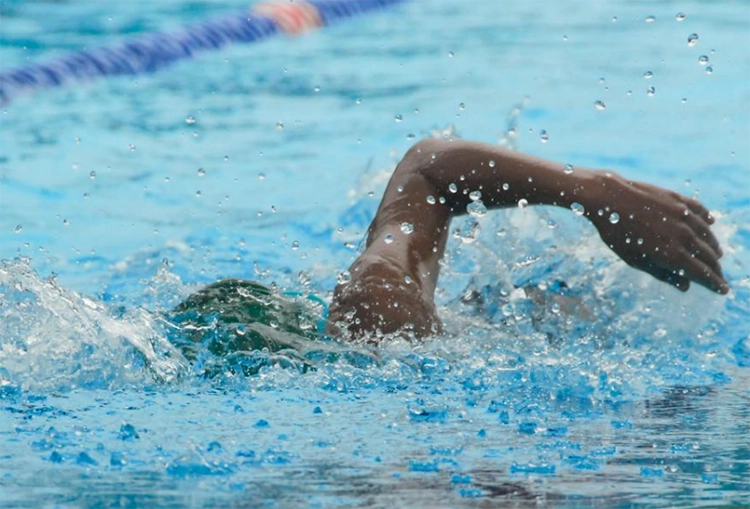Normally swimming is an aerobic exercise, but it can also contain elements of anaerobic exercise. Therefore, whether swimming is aerobic or anaerobic depends mainly on the intensity and duration of the swim.

Under what circumstances is swimming aerobic exercise?
Aerobic swimming training is mainly medium and low intensity, long time swimming, so that the heartbeat is gradually raised to the highest and lowest safe heartbeat range, the goal is to improve cardiopulmonary function and muscle endurance. Here are some examples of aerobic swimming training:
Continuous swimming: Swim at a comfortable pace, keeping your heart rate in the maximum heart rate range of 60% to 80%, for more than 20 minutes.
Interval swimming: Swim at a moderate pace, with long swims (such as 200 meters, 400 meters or more), and take short breaks in between.

What are the benefits of aerobic swimming?
A large amount of aerobic swimming endurance training can increase the thorax circumference, improve the lung capacity, increase the maximum oxygen uptake, and improve the ability to hold your breath over short distances.
In the low-intensity long distance training of aerobic swimming, it can also stabilize the technique and increase the sense of water, in the long distance training process can also reduce the number of breaths, increase the number of kicks per stroke cycle to enhance the maximum oxygen absorption and lung capacity, because in the final stage of the short distance can hold the breath is also an important factor in the final sprint to win.

How do you do aerobic swimming?
Therefore, in order to make aerobic swimming metabolic capacity and endurance level to get the greatest improvement, should choose the most appropriate amount of training and training period.
The best way to improve the aerobic swimming ability of middle and long distance training is to push the intensity to the critical or maximum oxygen intake training of the anaerobic swimming threshold as far as possible. In order to avoid the boring feeling of training, as long as the intensity and interval time are appropriate, other distance training can achieve this purpose.
Before deciding whether to do cardio or strength training, it is important to first determine your fitness goals.

If you like to build muscle, then you do not need to do long-term cardio training; If the goal is to lose body fat and increase muscle endurance, then the most effective way to train is to combine cardio and strength training
You can do cardio exercises as often as you want, but remember that when you are strength training, you must alternate your muscles with rest (that is, upper body strength training today, then give them the day off tomorrow and replace them with lower body strength training or other strength training)

When is swimming an anaerobic exercise?
Anaerobic swimming training is usually a high intensity, short time of swimming, the goal is to improve muscle strength, explosive power and speed, so anaerobic training is also called “strength training”, the following are some examples of anaerobic swimming training:
Sprint training: Swim short distances (such as 25 meters, 50 meters) with full strength, and take longer breaks between each sprint to maintain high intensity.
Strength training: High-intensity swimming using resistance equipment (e.g., drag umbrella, kickboard, hand flippers, etc.) to work specific muscle groups.

Who is anaerobic swimming suitable for?
As mentioned earlier, anaerobic swimming is more intense, but it can significantly improve human function.
For the average person, anaerobic swimming is suitable for those who want to build muscle strength and improve personal athletic ability through high-intensity training.
For professional athletes, especially those who swim short distances, the ability to swim without oxygen determines their competitive level.
Even in some sports with longer exercise time and relatively low intensity, such as races as long as 1000 meters, anaerobic metabolism also plays a key role in energy supply, especially in the final sprint of the race. At this time, the level of anaerobic capacity directly affects the performance and results of athletes.

Combine aerobic swimming with anaerobic swimming
If you are not a professional athlete and just want to improve your physical fitness through swimming, in order to achieve better results, you can alternate slow swimming and sprint while swimming, so as to get the aerobic and anaerobic benefits, swimming is very good for your health, because it has the support of both attributes. However, be sure to pay attention to your physical condition when swimming, and warm up before going into the water.

